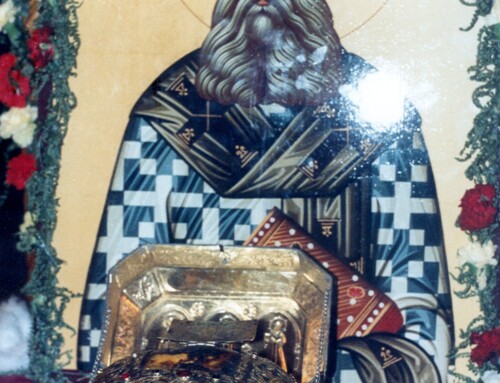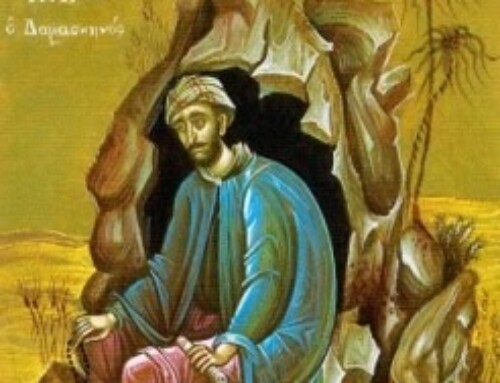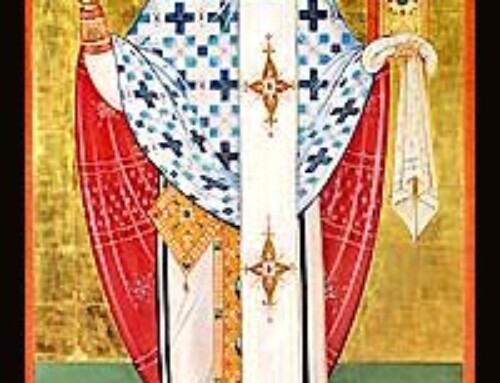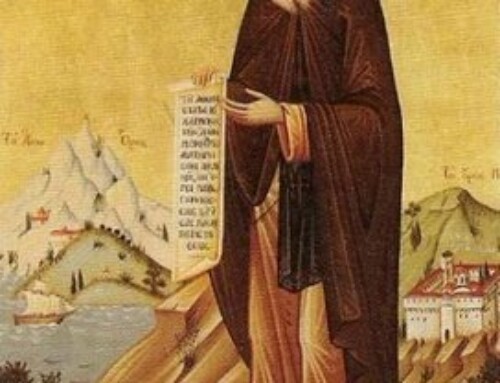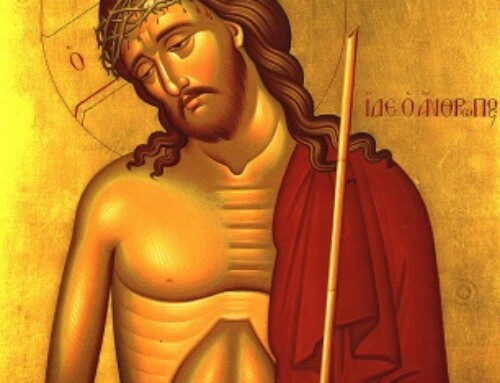Word Magazine January 2000 Page 9-10
FINDING OUR TRUE SELF IN SPIRITUAL DIRECTION
By Very Rev. Joseph Allen
Two of the ancient Fathers in the Christian East issued the call to all Christians to find one’s true self through the ministry called spiritual direction. St. Gregory of Nazianzus wrote:
Now is the time, O my soul, to know yourself and your destiny. Look to yourself, O my soul. Yield not to fatigue.
And St. Anthony The Great of Egypt said it in a mere few words:
He who knows himself knows everything. 1
These two Fathers — and other ancient Elders, men and women alike — invite us to enter the discovery of our deepest self through spiritual direction. Spiritual direction was born in the Christian East, that is, in the deserts of Egypt and Syria, and later blossomed in Russia.
But to enter this way, sometimes called the inner way, is risky, dangerous — one can even say “fearful.” There are a multitude of reasons why this is so. Most of all, it is fearful because it represents an encounter of spiritual depth, one which not only leads to a deeper relationship among human persons, but also seeks to carry us to the very root of all relationships — the presence of the living God himself. In the inner way one learns the meaning of the scripture: “It is a fearful thing to fall into the hands of the living God” (Heb. 10:31). In the history of spiritual direction such an encounter, which influences every other encounter in life, requires much on the part of both spiritual director and directee. Not everyone was willing to risk this encounter, but for those who did, the gains were immense; they discovered their deepest self, created in God’s image. By their witness, then, others were encouraged to also enter spiritual direction.
But what do we have to know about this ministry? How is it important in developing one’s Christian character?
In answering these questions, it is important to understand the three basic components of this inner way: the spiritual director, the directee and the direction itself. Let us briefly look at each component.
The Director. As the director agrees to respond to this particular call of his ministry, the main question is this: “How can I direct (guide, counsel) those persons entrusted by God to my care in such a way as to remain rooted in the Apostolic Christian tradition, and yet not fail to make proper use of the many contemporary resources — sociological, anthropological, physiological, and psychological — which are available to us?” In understanding this question, we begin to approach the important place in the ministry of the Church of the Iatros Pneumatikos, the “spiritual physician.”
The history which gives us the pattern and the paradigm of this ministry is found in the person who is described by the ancient Greek, “Geron,” or Elder. In the Slavic tongues this Elder was called the “Starets,” and in the Semitic it was the “Abba” and “Imma,” the father or mother. It should be remembered that not everyone had the charism to be such an Elder, but in the Eastern Christian Tradition the Orthodox Church recognized those who did. The faithful flocked to them. Today some of the functions of the Elder are often fulfilled in one’s Father Confessor, or one’s Pastor, although in the history of this ministry, they are not exactly the same.
More particularly, there is a good analogy which can help us to understand what the director was attempting to do. He or she was analogous to a contemporary “literary critic” who, through a relationship of intimacy and trust, helps another Christian to “write” his or her life story. This he does by delving into the various chapters which are already “written,” while never neglecting the unfolding present story. This, in turn, equips him to help the directee, by God’s grace and that person’s own goodwill, to write the continually unfolding future chapters — all, of course, in an atmosphere of sincere prayer.
In turn, it will help us to remember that every person’s story contains a multitude of characters, images, and actions, each of which has made an impact — positive or negative — on it, and has helped to shape it. These influences may be carried into the person’s present story from the past, or may be most active in the present; in either case, they may well seek to lead that story in a particular direction in the future. Whatever influences may mark the story, however, the distinctly Christian approach to spiritual direction will be to guide the person toward deeper communion with God. This is, indeed, the chief hallmark of any Christian ministry.
The Directee. In terms of our second component, the directee, the history of spiritual direction is clear: not everybody sought out an Elder for such counsel and guidance. And yet there were always those who, seeking greater wholeness and rebirth, healing and reconciliation, searched for this Iatros Pneumatikos, the “spiritual physician.”
Can it be any different today? St. Irenaeus had already written in the second century: “The glory of God is man fully alive.” And yet look about us. We have found the most clever ways to live half-well, half-alive; we overwork, oversmoke, overeat and overdrink. Thus we need the “spiritual physician” not only in times of crises — although there too — but we need the “everyday” help in seeking the wholeness from which, paradoxically, we always seem to be running away. We can run away forward into work, backward into tranquilizers, upward into fantasy, downward into despair. These forms help us to avoid the healing and integrity which we so badly need. Indeed, these negative contemporary forms hold us in bondage; they are our present-day “idols,” our demons.
The truth is, however, that we can be helped to get these various elements “out before our face” — to see them clearly for what they are — when we can share our story with our trusted director. In the history of spiritual direction, we can see how difficult it is to deal with such powerful negative idols. They will keep us from wholeness, spiritually and physically, unless we first recognize them; in the ministry of spiritual direction, the directee is helped to reach that point as a primary stage. Then, being guided to face our own demons — and we cannot “dig out” unless we first “dig in” — we can by God’s grace struggle against them. This struggle was known as “ascesis,” from which the word “asceticism” comes; the struggle is no different today.
This leads us into our third component, the process of direction itself. What really happens within the encounter of director and directee?
The Direction. Perhaps the finest description of spiritual direction is found in the ancient motif of fragmentation and transformation.
Crises abound in human life, and although spiritual direction is never limited to them, it may well be initiated by an individual’s experience of such a crisis; or again a new crisis might arise while one is already engaged in spiritual direction, and thus would naturally be introduced to the dialogue. Whatever the circumstances, however, crises do appear in a person’s life as a veritable “death,” a disintegration of life.
The writer Vilma Seelaus speaks of this fragmentation and transformation and the possibilities for God to act:
Fragmentation, the crisis of identity and meaning, touches the lives of each of us. Yet the potential for growth and transformation inherent in life’s struggles and breakdowns evades most of us. We fail to realize that dark times, condition us for God — that they invite us to a transformed identity through a deeper faith, hope and love.
Seelaus captures what truly happens in spiritual direction when she uses the unexpected analogy of the compost heap. It works well. The compost heap, as every organic gardener knows, is comprised of materials like weeds, leaves, vegetable skins, fruit peelings, etc. It includes manure if possible. These are heaped up with layers of soil. Gradually the contents begin to break down. Then, with the digging, probing, turning over of the ingredients, “dark, rich earth” is the eventual result. Seelaus writes that “the compost heap has risen to new life!” In dying to its own life, the banana peels, and all the stuff of the compost heap, can now enrich new life.
In a similar way in human life, when disintegration and fragmentation disrupt our lives, when the “dark times” are upon us, when we or our loved ones experience illness or broken relationships, failure, or even death, our first inclination is to flee the situation. At this point we need a spiritual director to work diligently with us, holding steady, while probing and turning over the depths of our being, in order to produce “rich, dark earth.”
Of course, in the dialogue, the director undoubtedly will also remind the directee that the Cross itself was a quintessentially “dark time,” embodying every dark time that will ever be faced by a Christian. Indeed, the paschal mystery of Jesus Christ is a unique manifestation of the cosmic process which has been part of the universe ab origine; its uniqueness lies in the fact that the Author Himself entered nature and sanctified it by filling it with Himself.
Thus, when such a crisis strikes, we can see that the penetration of one’s inner depths, in the quest of healing, is best undertaken with the trust, counsel and guidance of a spiritual director. The director, in turn, following the example of the ancient Elder, will remind the directee that all such healing and wholeness — which in the original Greek are the same word, holos —is, in the end, God’s activity. If we allow the Lord to work with our own “struggle,” He will bring life out of the brokeness of our lives. But it does take both: God’s grace and human will.
Finally, then, in understanding these three components of spiritual direction — the director, the directee and the direction itself —we return to our initial question of “finding our true self.” In doing so, it is to the Russian novelist Dostoevsky we can turn. In his novel The Brothers Karamazov Dostoevsky asks the question, “Who, then, is the Elder (Starets)?” He then proceeds to describe the characteristics which he says, “evolved in the East from a practice that goes back over a thousand years.” He ends the description by writing that such spiritual direction undertaken voluntarily … in the hope of self-conquest (and) in order that the person will attain to perfect freedom, that is to say, freedom from self. In this way, one escapes the fate of those who have lived their whole life without finding their selves within themselves.
The quest should be no different today. Spiritual direction is the avenue in which we can, indeed, “find our self within ourself.”
Footnotes:
1. The Philokalia, Vol. I. p. 13. cited in Byzantine Thought and Art, by Constantine Cavarnos.
2. “Elders,” in The Brothers Karamazov. p. 28.
Father Joseph, pastor of St. Anthony Orthodox Church in Bergenfield, is the Director of Theological and Pastoral Education in the Archdiocese. His recent book on spiritual direction in the Christian East, Inner Way, is currently in its second printing.

